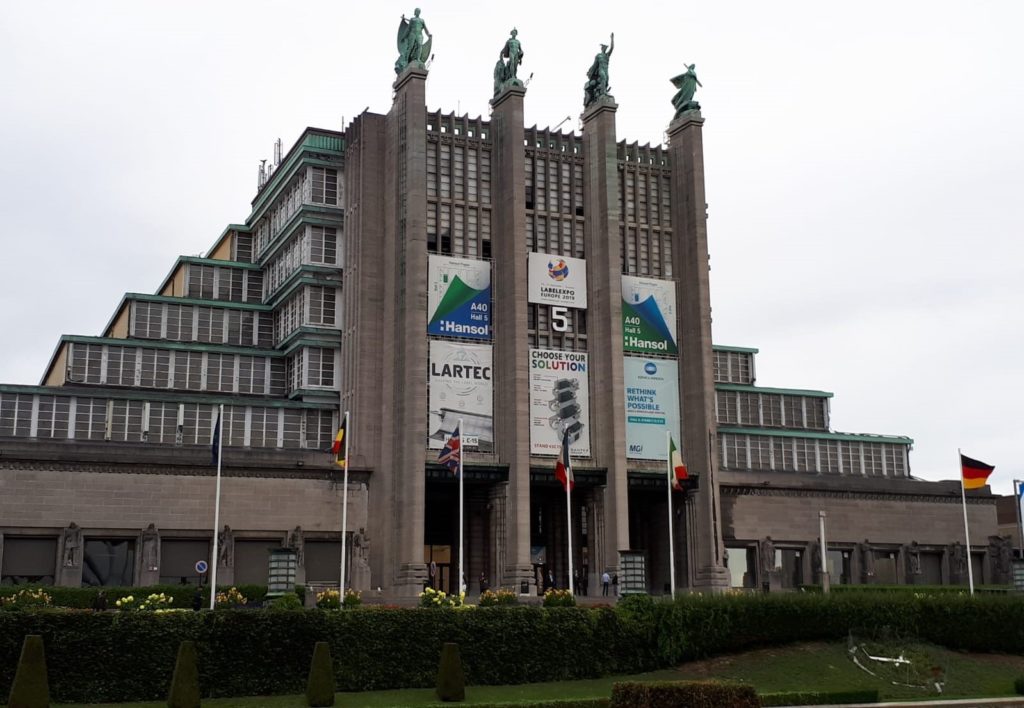You always remember your first trade show. For me, it was Labelexpo Europe 2013. Back then I was still a fresh-faced Account Executive who had been at AD Communications for just over a year and was eager to explore my first exhibition.
I distinctly remember my amazement at the sheer size of the exhibition, especially for a product that, until then, I’d always thought of simply as a ‘sticker’. But my underestimation of labels at the time serves to show just how easy it is for the general public to overlook the pivotal role that labels play in our lives, not to mention how lucrative an industry it actually is – according to Smithers PIRA, the global market for label printing will reach $49.90 billion in 2024.
As the world’s largest event for the label and package printing industry, Labelexpo Europe is the ideal platform for demonstrating the true value of labels. With a visitor and exhibitor base made up of printers, converters, package designers, brand owners and assorted industry suppliers, it’s the sort of hub brimming with innovation where you can see up close the most advanced collection of label and package printing technologies and, more importantly, discover the latest trends emerging from the sector.
One of the key talking points at this year’s exhibition will no doubt be personalisation, a trend that has already taken the print and packaging industries by storm. In a time when brands are concerned with creating better customer experiences, label personalisation represents a worthwhile investment. Now more than ever, labels are viewed as an integral part of branding and packaging design, as well as a means to create competitive differentiation.
But basic personalisation tactics, such as inserting a customer’s first name in a label design, are no longer enough to captivate consumers (print personalisation has come a long way since the 2011 Share a Coke campaign). Today’s personalised designs need to be more nuanced while also delivering the ‘wow factor’ that prompts consumers to share on social media – ‘instagrammability’ is a term that’s being increasingly used in creative design meetings.
Sustainability is another topic that’s dominating multiple industries, including labelling. What may have been dismissed as a temporary trend a few years ago has now become an issue of ethical responsibility that is being adopted not just among consumers, but also label producers. As a result, biodegradable, compostable materials are fast becoming viable alternatives to petroleum-based polymer substrates. Linerless labels are also likely to gain popularity in the near future. By eliminating the liner, labels can be used without leaving behind any waste materials, making them a more eco-friendly solution.
But for me, one of the most fascinating areas of innovation is smart labels. Thanks to the latest technologies available to manufacturers, smart labels can be used as an effective tool either for consumer engagement in retail or diagnostics in food and medical packaging. They are able to measure packaging performance, for example by detecting overheating, or they can tell you when your meal is cooked. They can even reveal the presence of bacteria and viruses in a medical environment.
As for retail, the increased use of augmented reality and 2D barcode technology provide brands with considerable opportunities for heightened consumer engagement, while also resulting in greater responsibility and transparency for claims of provenance and authenticity for packaged products.
All of which paves the way for an insightful experience at this year’s Labelexpo Europe. What used to be viewed merely as technical packaging components are now revealing themselves to be gateways to wider content that enable deeper brand engagement. See you at the show!
